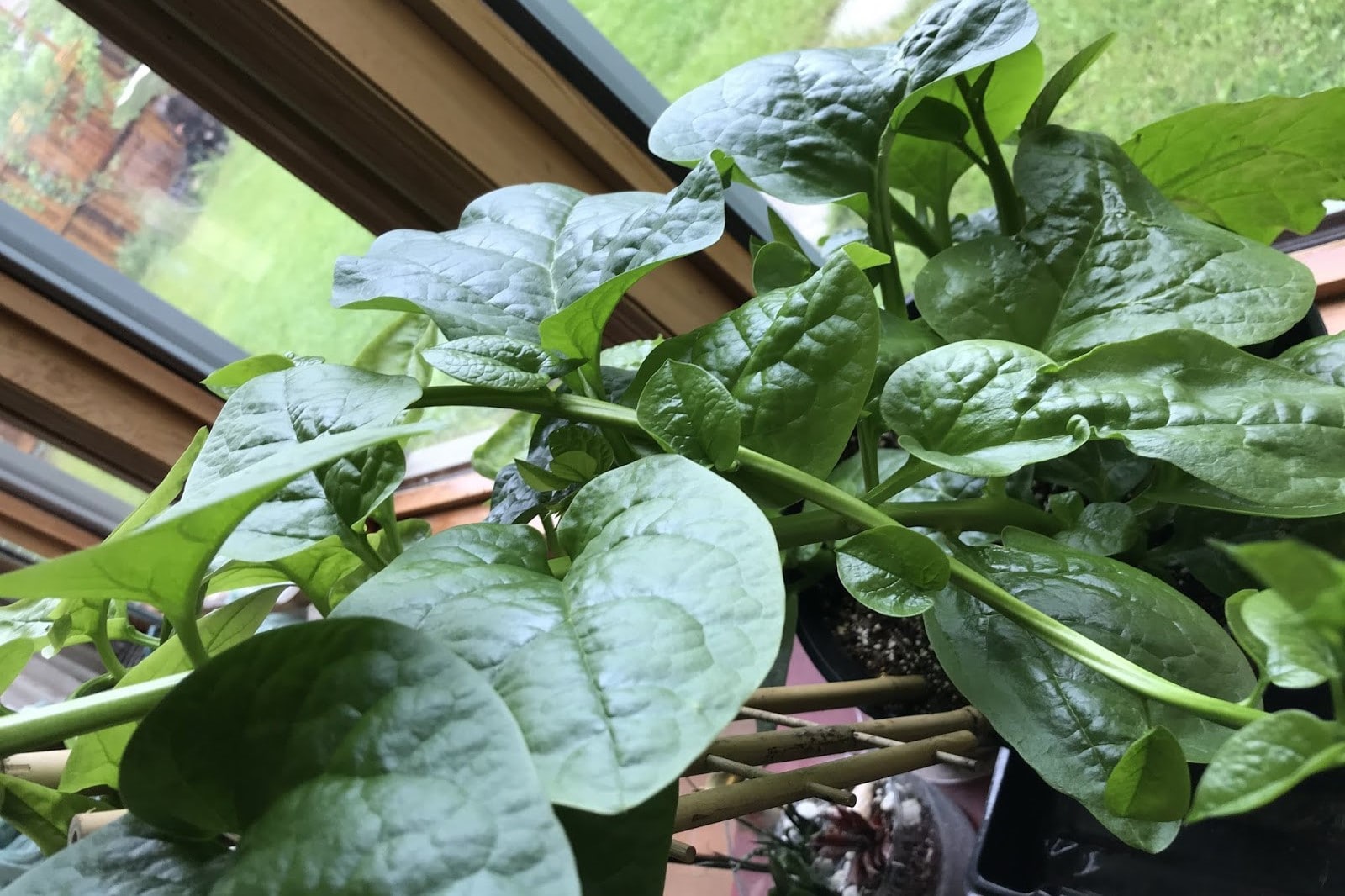
Malabar spinach might not be as famous as its leafy cousins, but it packs a punch in both flavor and nutrition. Ever wondered what makes this green gem special? Malabar spinach isn't just any ordinary plant; it's a climbing vine that thrives in warm climates, making it a perfect addition to summer gardens. Unlike regular spinach, this variety boasts thick, fleshy leaves that are perfect for salads, soups, and stir-fries. Rich in vitamins A and C, iron, and calcium, it’s a powerhouse of health benefits. Curious about its origins? This versatile plant hails from tropical Asia and Africa, where it's been a staple for centuries. Ready to learn more? Let's dive into 20 fascinating facts about Malabar spinach!
Key Takeaways:
- Malabar Spinach is a heat-tolerant climbing vine with edible leaves and stems. It's rich in vitamins, iron, and antioxidants, making it a nutritious and low-calorie addition to meals. Plus, it's easy to grow and has cultural significance in Asian cuisines.
- Whether you're a foodie or a gardening enthusiast, Malabar Spinach is a versatile and culturally significant plant that offers a unique culinary experience and holds traditional medicinal value. It's a symbol of prosperity and a sustainable, eco-friendly choice for home gardens.
What is Malabar Spinach?
Malabar Spinach, also known as Basella alba, is a unique leafy green that thrives in warm climates. Unlike traditional spinach, it belongs to the Basellaceae family. Let's dive into some fascinating facts about this versatile plant.
-
Not True Spinach: Despite its name, Malabar Spinach isn't related to the common spinach (Spinacia oleracea). It's a different species altogether.
-
Climbing Vine: This plant grows as a climbing vine, which can reach up to 10 feet in height. It needs support like a trellis or fence to grow properly.
-
Heat Tolerant: Unlike regular spinach, Malabar Spinach thrives in hot weather. It can grow well in temperatures above 90°F.
-
Edible Leaves and Stems: Both the leaves and stems of Malabar Spinach are edible. They have a slightly mucilaginous texture, making them great for soups and stews.
Nutritional Benefits of Malabar Spinach
Malabar Spinach is not just tasty but also packed with nutrients. Here are some health benefits you might not know about.
-
Rich in Vitamins: This leafy green is loaded with vitamins A and C, which are essential for eye health and immune function.
-
High in Iron: It contains a good amount of iron, which is crucial for blood health and preventing anemia.
-
Antioxidant Properties: The plant is rich in antioxidants, which help fight free radicals and reduce oxidative stress.
-
Low in Calories: Malabar Spinach is low in calories, making it an excellent choice for those looking to maintain or lose weight.
Growing Malabar Spinach
Interested in growing your own Malabar Spinach? Here are some tips to get you started.
-
Easy to Grow: This plant is relatively easy to grow and can be cultivated in pots or directly in the ground.
-
Prefers Humidity: It thrives in humid conditions, making it ideal for tropical and subtropical climates.
-
Requires Full Sun: For optimal growth, Malabar Spinach needs full sun, although it can tolerate partial shade.
-
Fast Growing: Once established, it grows quickly and can be harvested multiple times throughout the growing season.
Culinary Uses of Malabar Spinach
Malabar Spinach is versatile in the kitchen. Here are some ways to incorporate it into your meals.
-
Stir-Fries: Its slightly crunchy texture makes it perfect for stir-fries. It pairs well with garlic and soy sauce.
-
Soups and Stews: The mucilaginous texture thickens soups and stews, adding a unique mouthfeel.
-
Salads: Young leaves can be eaten raw in salads, providing a fresh and slightly peppery flavor.
-
Smoothies: Blend it into smoothies for an extra nutrient boost without altering the taste significantly.
Cultural Significance of Malabar Spinach
This plant holds cultural importance in various regions. Let's explore its cultural roots.
-
Asian Cuisine: Widely used in Indian, Filipino, and Southeast Asian cuisines, it's a staple in many traditional dishes.
-
Medicinal Uses: In traditional medicine, it's used to treat ailments like diarrhea and ulcers due to its soothing properties.
-
Symbol of Prosperity: In some cultures, growing Malabar Spinach is considered a sign of prosperity and good health.
-
Eco-Friendly: It's a sustainable crop that requires minimal resources, making it an eco-friendly choice for home gardens.
Final Thoughts on Malabar Spinach
Malabar spinach isn't just another leafy green. Packed with nutrients, it offers a unique taste and texture. This versatile plant thrives in warm climates, making it a great addition to any garden. Its vibrant colors and climbing nature add visual appeal, while its health benefits make it a smart choice for your diet. From boosting immunity to aiding digestion, Malabar spinach has a lot to offer. Whether you’re a seasoned gardener or a newbie, growing this plant can be rewarding. Plus, it’s a fantastic way to introduce more greens into your meals. So next time you’re thinking about adding something new to your garden or plate, consider Malabar spinach. It’s a small change that can make a big difference. Happy gardening and eating!
Frequently Asked Questions
Was this page helpful?
Our commitment to delivering trustworthy and engaging content is at the heart of what we do. Each fact on our site is contributed by real users like you, bringing a wealth of diverse insights and information. To ensure the highest standards of accuracy and reliability, our dedicated editors meticulously review each submission. This process guarantees that the facts we share are not only fascinating but also credible. Trust in our commitment to quality and authenticity as you explore and learn with us.


